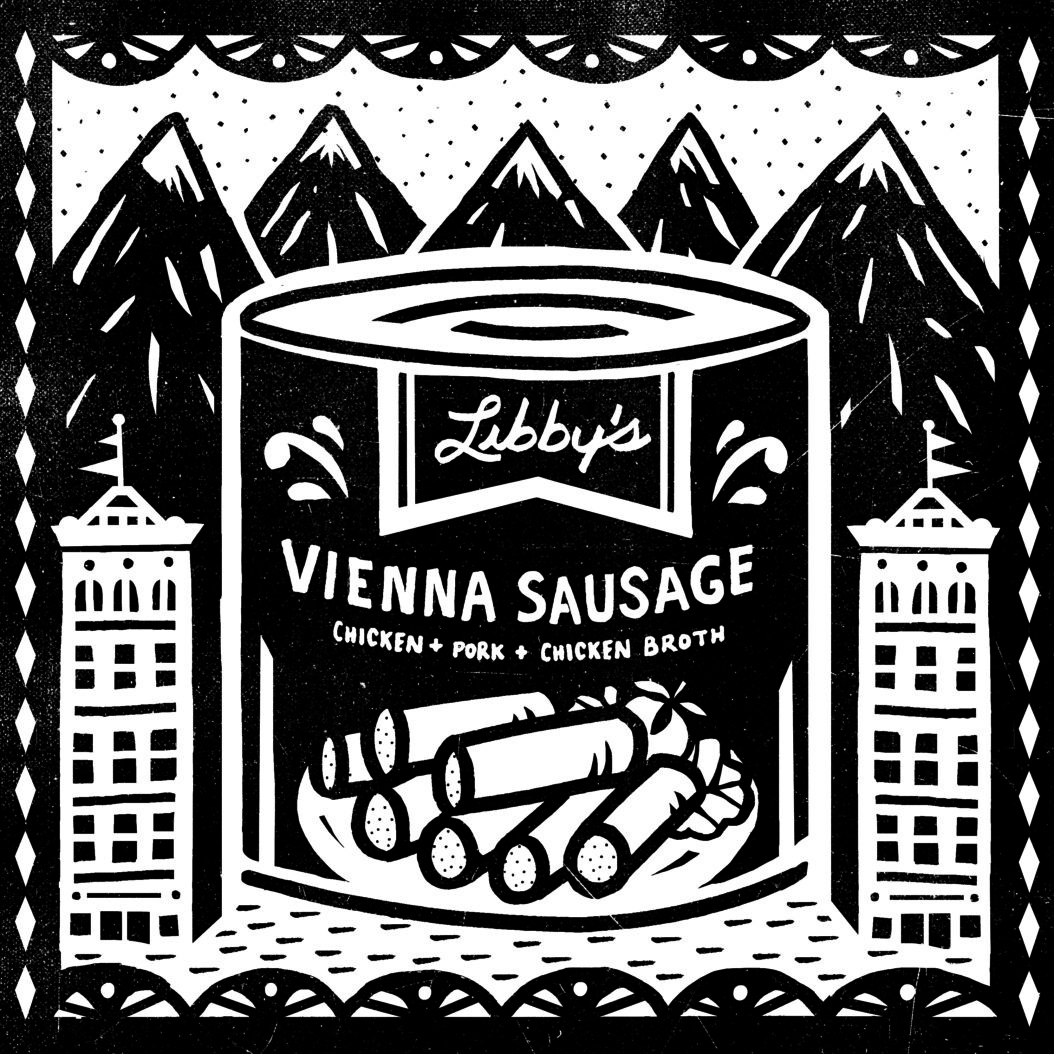
The littlest link…
It’s hard to find a food more ubiquitous than sausage. Every country has their versions, because sausage was developed to do something important: save food from being wasted. Got a pile of tiny trimmings left over from slaughter time? Got a length of spare intestine? You’re in business. Sausages all around! They can be smoked or cured, steamed or grilled, but they always turn a pile of scraps into a meal.
Sausages should have been a low-class food. They are, after all, made from leftovers. Richer folks could afford to eat big pieces of meat like hams and pheasants and roast beef, but they wanted sausage. It’s not hard to understand why. The balance of fat, protein, and salt in a sausage made it a perfect comfort meal. Soon, butchers and delis and families and whole countries were working to make fancier sausages. They experimented with novel spices and processing methods. A pile of scraps no longer, sausages became a source of pride.
Not to be outdone, the United States threw its hat in the ring with a product called Vienna Sausage. Bursting upon the sausage scene in 1903, these short lengths of forcemeat were smoked and canned in aspic or chicken broth. They had almost nothing in common with European vienna sausages which were long, thin hotdog-like creatures. American Vienna Sausages were their own thing, man. Made of beef, pork, and chicken (the turducken of sausage?!) they became a phenomenon.
Advertising did a lot of the heavy lifting when it came to promoting these little links. A 1904 Libby’s print ad shares that “Vienna Sausages are served extensively at home and abroad, on transatlantic ships and in dining cars.” In 1954, the ads had shifted tone considerably, now claiming the little sausages to be “a real wife-saver.” By 1990, the ads were talking about ingredients, informing the public that the links were ALL meat. NO filler. So, whether you were a traveler, an overwhelmed housewife or just completely obsessed with meat, Vienna Sausages were for you. Luckily, recipes were everywhere, encouraging creativity and innovation with these canned wieners. Pigs in a blanket! Tiny Corndogs! Wieners with Sauerkraut! Hors d’oeuvres! The possibilities seemed truly endless.
But if canned Vienna Sausages were a uniquely American invention, they certainly did not stay here. We talked about this a bit in relation to Spam, but it is worth repeating here. Vienna Sausages spread as many indestructible foods did: with conquest, colonialism, and war. Elaine Castillo frames this beautifully in her article, Colonialism in a Can. What often started as survival food for interlopers in unfamiliar settings, was enriched and elevated by locals who made it part of their cuisine.
Love ‘em or hate ‘em, Vienna Sausages are part of the rich tapestry of preserved meats. They might not have the panache of prosciutto, but they have kept folks filled and earned some fans along the way. Not too shabby for a tiny canned sausage.
